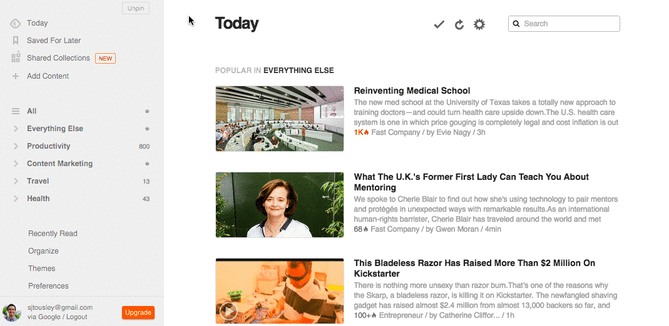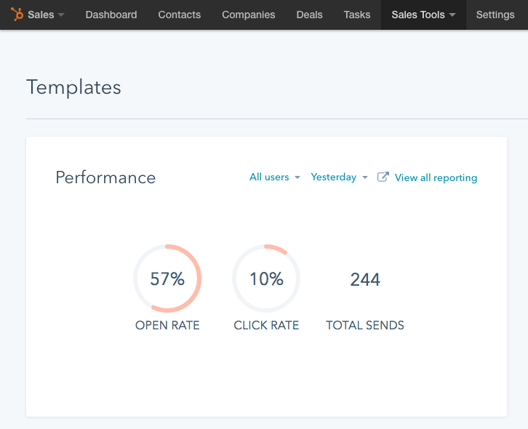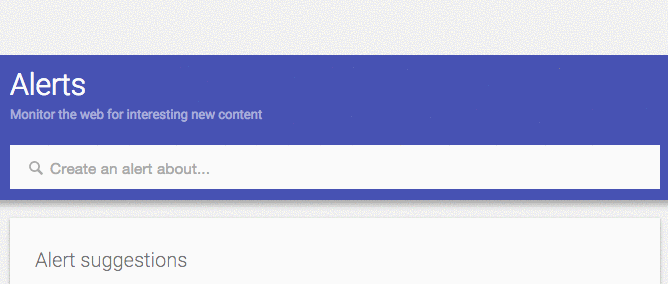Like most small businesses, we used to get 90% of new clients from referrals.
If we had more time, we’d generate leads through inbound marketing. If we had more money, we’d purchase $30,000+ in advertisements or sponsorships.
But we had limited time AND money. So, we had to come up with a different solution.
As a result, we built a follow-up email sequence.
In other words, if you build your emails out before hand and set it up with email marketing automation, you can follow up with prospects at scale… without being the one to click the “Send” button over and over.
We built our own follow-up email sequence — using the free Email Templates tool from HubSpot Sales — that generated $100,000 in 30 days. Our total revenue increased by 215% since we started sending these templates in a sequence.
Email Sequence Examples
While we sent a follow-up email sequence, there are a few types of sequences you can send to engage your prospects.
- Nurturing email sequence: A nurturing sequence introduces the prospect to your company. They may have downloaded an ebook or opted in to a content offer, but they are not sales ready. A nurturing sequence is designed to get them there by providing social proof, handling objections, and establishing value.
- Engagement email sequence: An engagement email sequences uses email to build rapport with them. The idea is to get them engaged with your content to build interest and keep your organization top of mind. This type of sequence might help you identify engaged subscribers who open, click, and take action on emails so that you can enroll them in other sequences tailored to their specific journey.
- Conversion email sequence: This sequence is used when you’re asking something of your prospect (e.g., booking a call or meeting, scheduling a demo).
- Follow-up email sequence: Just because a prospect doesn’t respond to a sales outreach email doesn’t mean they’re not interested. They may need a few “impressions” before noticing and taking action. A follow-up email sequence loops back and touches base with your prospect after a few outreach attempt. This is so sales reps can reduce the number of manual emails they send and admin work they have to do.
The Best Email Marketing Sequence
Ready to see a sequence in action? Here’s how we earned $100,000 in 30 days.
Step 1: Find prospects who are mentioned in the news
We’re a branding agency in the healthcare industry, so the majority of our clients are doctors or dentists.
One of our favorite tricks is finding doctors who are mentioned in the news and reaching out to congratulate them. Saying “congrats” warms up the initial email and catches their attention.
There are two methods we use for monitoring the news: Google Alerts and Feedly.
Creating a Google Alert is simple. Type the keyword you want to monitor and save the alert to send to your email address.
For example, a keyword that we track is “orthopedic surgery”. So, I just type in “orthopedic surgery”, enter my email address, and click Create Alert:
Now I’ll get an alert when an orthopedic surgeon is mentioned in the news.
We also use Feedly to discover when a doctor is mentioned in the news. I simply add websites to my “feed,” so when a website we’re monitoring publishes a new article we have alerts saved in one place.
For example, a website we follow in our industry is KevinMD.com. I add the website to our Feedly account by clicking +Add Content, typing “KevinMD.com”, clicking the green +Feedly button, then click Add:

And just like that, KevinMD is added to our feed.
Other websites we’ve gotten new customers from are TEDmed.com, Ad Week, and Advertising Age. So, I’ll add those to my Feedly account as well.
To see all of them at once, I click on my Health tab, and all of them pop up as one feed:

Step 2: Send an email congratulating them on their news coverage
Now that we’ve found our doctor to contact, we send the first email using the free Email Templates tool from HubSpot Sales.
Here’s our best-performing initial email template:
Dr. [Last name],
Because I work so much with [targeted industry],
I constantly follow industry news. Recently I noticed that you’ve [insert company action].
Usually when that happens, [insert business issue] becomes a priority. That’s why I thought you might be interested in finding out how we helped [similar firm] get going quickly in their new direction — without any of the typical cookie cutter approaches to marketing.
Check out our patient advertising and brand campaigns here. If you’d like to learn more, let’s set up a quick call. Schedule 15 minutes here on my calendar.
Regards,
Matthew
P.S. If you’re not the right person to speak with, who do you recommend I talk to?

More often than not, they’ll click reply or schedule time on my calendar.
If I don’t hear anything for 24 hours, I’ll send a second email.
Step 3: Send a follow-up email with helpful content personalized to their industry
This email template always drives a ton of responses.
For example, if our current prospect is a physician, I’ll send him a valuable branding survey tool we use to help clients differentiate themselves.
Here’s what that might look like:
Hello Dr. [Last name],
I’m following-up my previous email with a free tool I think you’ll love.
It’s a brand analysis survey I created just for you (literally, your name is on it), that will help you understand how your practice is different from other doctors in [insert their city].
Click here [add hyperlink to survey] to begin the brand differentiation analysis survey. When we speak, I’ll benchmark your responses against the top physician brands around the country.
I’m sharing my calendar (click here) so we can schedule a convenient time to discuss.
Enjoy your weekend,
Matthew

After we added doctor’s names to the survey, our response rates skyrocketed. It’s a small tweak but personalization is a powerful tool.
If the doctor doesn’t click reply or book time on my calendar, I’ll send another follow-up email.
Step 4: Send the third email template of “Trying to connect”
If I don’t hear anything for 24 hours, I’ll send this follow-up email again:
Hi Dr. [Last name],
I’m sorry we haven’t been able to connect. Again, I know how hectic things can get at work and with family.
I would be available for a call during weekends or before or after work hours if that’s easier for you? I don’t mean to bug you, but I do want to help you manage your team so you can exceed your goals of [insert custom goals].
To schedule a time on my calendar, just click here.
Best,
Matthew

This single email has the highest response rate of all the templates.
Step 5: Send the final follow-up email template of “Permission to close your file?
If I’m struck with silence after the first three emails, I’ll send a final follow-up email asking for permission to close their file:
Permission to close your file?
Hi Dr. [Last name],
I’m writing to follow up. We are in the process of closing files this month.
Typically, when I haven’t heard back from someone it means they are either really busy or aren’t interested. If you aren’t interested, do I have permission to close your file?
If you are still interested, what do you recommend as a next step?
Thanks for your help.
Regards,
Matthew

Why does this email perform so well? Perhaps because people want what they can’t have.
I’m not entirely sure, to be honest. My assumption is they realize, “Oh, I’m never going to hear from this guy again. Maybe I should look into their business …“
Finally, our last step is measuring performance of our email templates.
Step 6: Improve our email templates by measuring their performance
Inside HubSpot’s free Email Templates tool we can measure our open rates and click rates:

We constantly measure email performance and make improvements as we see fit.
This helps us understand what templates are performing the best versus what templates should be improved. Without this tool, we are making decisions with zero data.
These templates have worked tremendously well for us so far, but we’re still early in the process. We will continually test until we discover the perfect email templates.
If you’d like to try these templates yourself, just create a free HubSpot account, open the email templates tool, and click send!
Hopefully you’ll get similar results as us — closing $100,000 in just 30 days.
Editor’s note: This post was originally published in May 2019 and has been updated for comprehensiveness.
![]()


